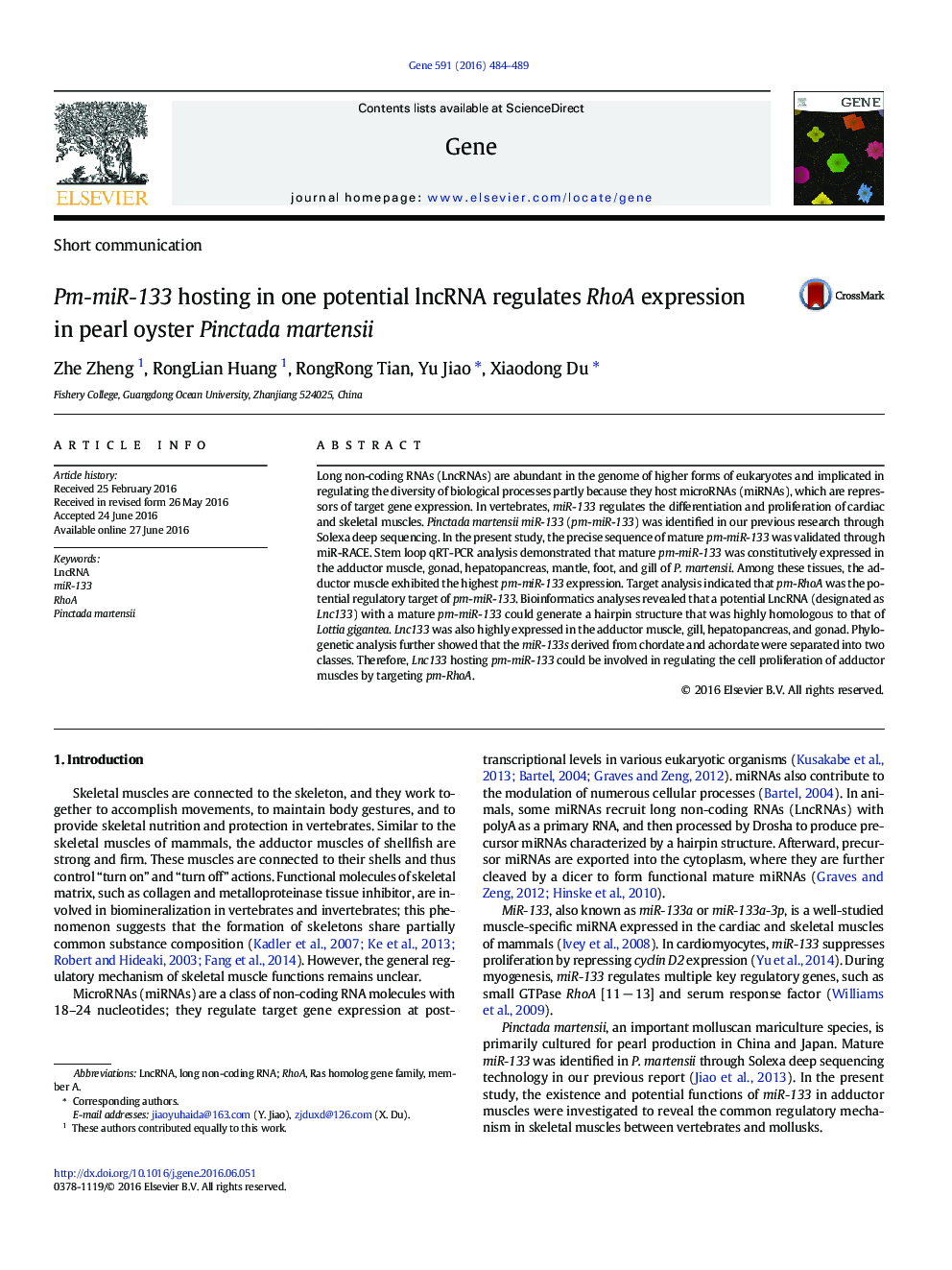| کد مقاله | کد نشریه | سال انتشار | مقاله انگلیسی | نسخه تمام متن |
|---|---|---|---|---|
| 2814800 | 1159830 | 2016 | 6 صفحه PDF | دانلود رایگان |

• The sequence of pm-miR-133 was validated with the most abundant in adductor muscle.
• Pm-RhoA was the potential regulatory target of pm-miR-133.
• One potential LncRNA (designed as Lnc133) could be the primary RNA of pm-miR-133.
Long non-coding RNAs (LncRNAs) are abundant in the genome of higher forms of eukaryotes and implicated in regulating the diversity of biological processes partly because they host microRNAs (miRNAs), which are repressors of target gene expression. In vertebrates, miR-133 regulates the differentiation and proliferation of cardiac and skeletal muscles. Pinctada martensii miR-133 (pm-miR-133) was identified in our previous research through Solexa deep sequencing. In the present study, the precise sequence of mature pm-miR-133 was validated through miR-RACE. Stem loop qRT-PCR analysis demonstrated that mature pm-miR-133 was constitutively expressed in the adductor muscle, gonad, hepatopancreas, mantle, foot, and gill of P. martensii. Among these tissues, the adductor muscle exhibited the highest pm-miR-133 expression. Target analysis indicated that pm-RhoA was the potential regulatory target of pm-miR-133. Bioinformatics analyses revealed that a potential LncRNA (designated as Lnc133) with a mature pm-miR-133 could generate a hairpin structure that was highly homologous to that of Lottia gigantea. Lnc133 was also highly expressed in the adductor muscle, gill, hepatopancreas, and gonad. Phylogenetic analysis further showed that the miR-133s derived from chordate and achordate were separated into two classes. Therefore, Lnc133 hosting pm-miR-133 could be involved in regulating the cell proliferation of adductor muscles by targeting pm-RhoA.
Journal: Gene - Volume 591, Issue 2, 15 October 2016, Pages 484–489